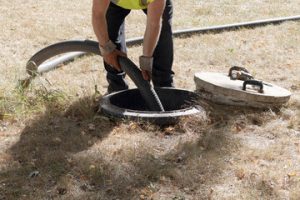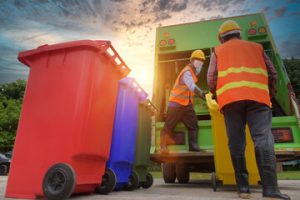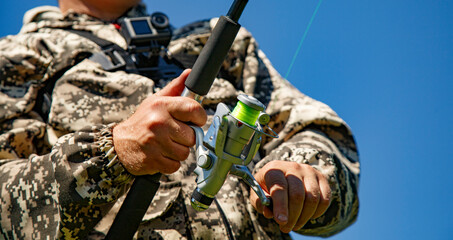Your septic system is vital to your property’s health and safety. If you neglect proper maintenance, it can lead to costly damages and hazardous waste backups.

Septic pumping removes the accumulated solid waste and sludge from your septic tank. This process extends the life of your septic system and reduces the risk of blockages, clogs and wastewater contamination.
When wastewater leaves your home, it separates into three layers. The top layer, known as scum, is composed of oils and fats. The middle layer is the wastewater itself, and the bottom layer is sludge. Septic tank pumping removes the sludge from the tank and prevents it from entering the drain field, where it can cause clogs. This keeps the septic system working efficiently, eliminating sewage backups and protecting your property’s value.
Septic systems are complicated and can fail if not properly maintained. Professionals know how to spot early warning signs and make repairs that prevent disasters from occurring. They also have the experience necessary to safely and effectively perform septic tank pumping. Attempting to handle this work yourself could lead to major problems, including costly repair bills and water damage that necessitates expensive renovations.
A septic tank that isn’t pumped on time can lead to plumbing backups in your house, which is an unpleasant and messy situation. Sewage can contaminate floors, walls, and personal belongings, leading to significant expenses for cleaning services. When left untreated, sewage can even damage your home’s foundation, making it unsafe for future use. Regular septic tank pumping lowers the risk of this costly and unsanitary issue by reducing waste buildup.
A well-functioning septic system improves the quality of your life by making it more comfortable to live in your home. If you want to increase your home’s resale value, maintain a regular maintenance schedule with a local septic tank service provider.
Keeping your septic tank properly sized for your home’s needs and maintaining good sanitation practices will extend its lifespan. You can do your part by limiting household water usage, using septic-safe products (toilet paper, human waste, and paper towels), and avoiding heavy traffic on the drain field, which compacts soil and can cause pipes to break or clog.
A septic system that’s regularly pumped by professionals will serve your family well for years to come, preventing problems that require costly repairs and replacements. This routine maintenance also helps protect your property’s value by ensuring that the septic system is in good condition when potential buyers view your home.
Maintains the Longevity of Your Septic System
Once wastewater leaves your home, it travels to the septic tank, where it separates into three layers. The top layer is scum, which contains oils and fats, the middle is wastewater, and the bottom layer is sludge, which is solid waste. Over time, sludge and scum build up in the tank and may cause clogs and other problems. Septic tank pumping removes these materials and keeps your system working correctly.
If you neglect routine septic tank maintenance, your system could experience a sudden failure. In most cases, this is due to a build-up of sludge that can’t be broken down by bacterial action within the tank. When this happens, it can overload the drain field and cause sewage to back up into your home. Getting your septic tank pumped regularly prevents this from happening and extends the lifespan of your system.
Preventative maintenance also reduces the likelihood of costly repairs. If you notice signs of a malfunctioning septic system, such as slow draining or foul odors, contact us right away. We’ll schedule a service appointment and take care of the problem before it gets out of hand.
Septic systems protect your health by removing dangerous pathogens from household waste before it enters groundwater and water sources. However, a poorly-maintained septic tank can allow these pathogens to escape into soil and water sources. This threatens the quality of local water and creates a health risk for people and pets who use the water in the area. Routine septic tank maintenance and adherence to recommended usage levels can minimize these risks.
A septic system is an important investment for any property owner. Septic tank maintenance and regular inspections can help you extend the life of your septic system, which will save you money on repair costs and protect the value of your property. Contact us today to learn more about our septic tank pumping services and to schedule your next appointment. We look forward to keeping your home septic tank running smoothly for years to come.
Prevents Environmental Contamination
The septic tank’s purpose is to treat wastewater, reducing its toxicity and removing pathogens before releasing it into the soil. Its design allows it to work without constraints imposed by sewer lines, opening up housing possibilities for property owners in rural and remote areas. When the septic system is well-maintained, it can function reliably for decades. However, if the tank is allowed to fill up, the solid waste can leak into soil and water sources. This contamination can cause a variety of issues, from unpleasant odors in the home to hazardous algae blooms that threaten local wildlife.
Getting your septic tank pumped regularly helps prevent this contamination. The pumping process removes the sludge layer that has formed in the bottom of the tank, preventing it from overflowing into the drain field. During this procedure, the technician may also inspect the tank to look for any damage or potential problems. If they find any issues, they may recommend further maintenance like septic tank repair or drainfield restoration.
One of the earliest warning signs that your septic tank is full is a slowdown in water flow. While plungers and other drain cleaners can provide temporary relief, they don’t address the underlying issue of a full tank. It’s important to get the tank pumped as soon as possible to avoid a more costly and involved repair or replacement job.
A septic tank that is too full loses the ability to separate solid waste from wastewater. If the solid waste reaches the drain field, it can pollute the surrounding soil and water sources. The harmful contaminants can then enter groundwater and contaminate drinking water supplies. Regular septic tank pumping reduces the chances of this contamination and protects natural water sources.
In addition to septic tank pumping, it’s important for homeowners to make smart choices when using their drains. Choosing phosphate-free detergents and avoiding excessive toilet use can help lower the amount of phosphorus entering your septic system. These practices can also extend the life of your septic system and improve its efficiency. By making these small changes, you can play a big role in preserving the environment.
Increases Your Property’s Value
If you’re considering selling your property in the future, it’s crucial to keep your septic system in good working condition. The best way to do this is through regular maintenance and pumping. This prevents large-scale repairs and system failures that can be costly and hazardous for potential buyers.
Moreover, it extends the lifespan of the entire system and ensures that the drain field continues to function properly for years. This is particularly important in areas with shallow soil depth or aquifer-sensitive locations where septic tank placement isn’t feasible. Performing routine maintenance can also help you avoid expensive replacements or system upgrades that are necessary when your septic system isn’t well maintained.
Unsightly drain backups, sewage odors, and groundwater contamination are major turn-offs for prospective buyers. They can also be a sign that your septic system is failing or about to fail. A professional inspection of your septic system can reveal any issues before they become costly problems that deter buyers and lower your property’s value.
A septic system that’s been properly maintained can increase your property value by as much as 15%. A well-documented history of septic system maintenance is a major selling point for homes, especially in areas where public sewer systems aren’t available. A homeowner who’s committed to septic system maintenance will likely spend less time on maintenance and repairs over the years, which can also save them money on costly system replacements or repairs.
Getting your septic system pumped regularly is a smart investment. It’s far cheaper than paying government sewer fees and repairing or replacing a damaged septic tank. Regular maintenance can also help you avoid clogs, environmental contamination, and system failures that can lead to expensive repairs.
If you haven’t had your septic tank pumped in several years, contact us today to schedule an appointment. Our professional septic system maintenance team can perform routine inspections, repairs, and replacements to keep your septic tank in tip-top shape and help you protect your home’s value. We’ll even offer a complimentary septic tank pumping estimate!




